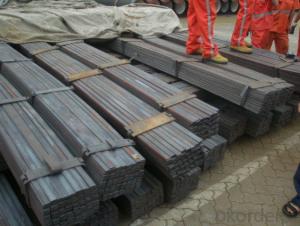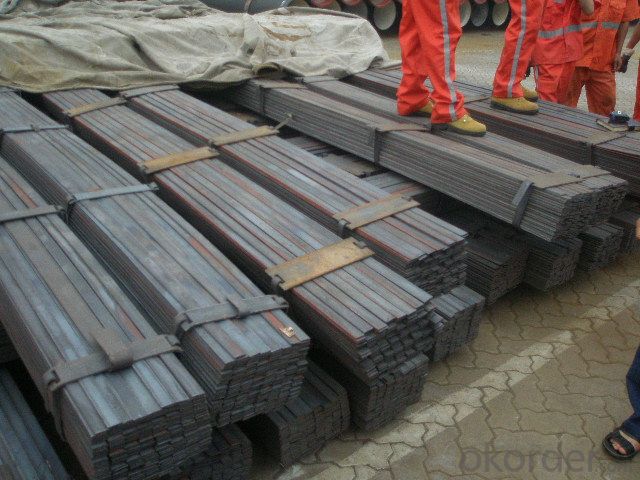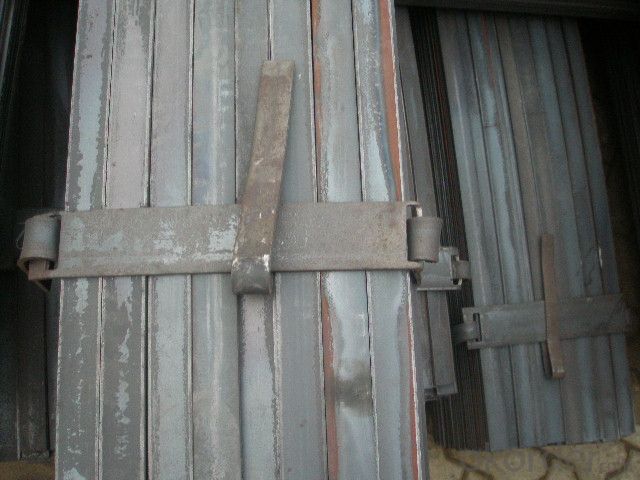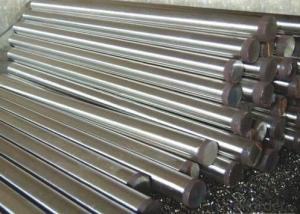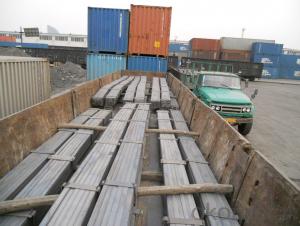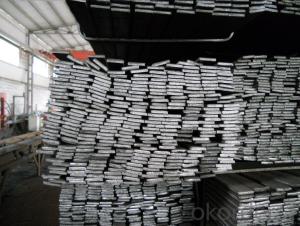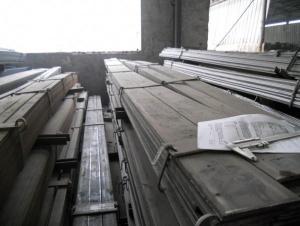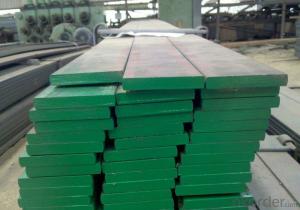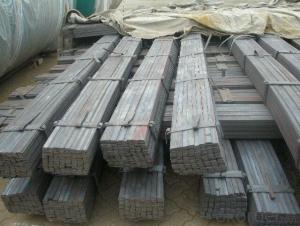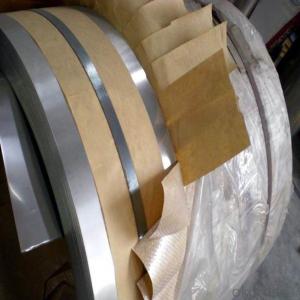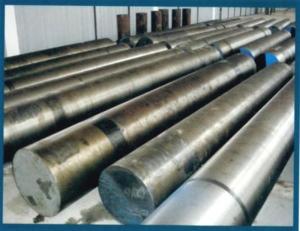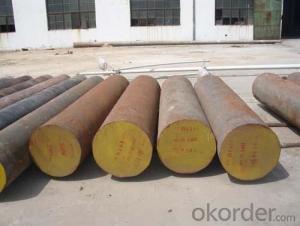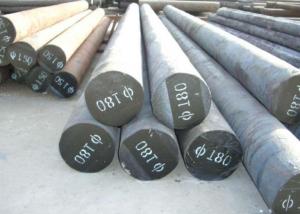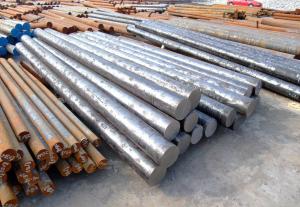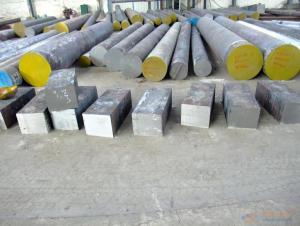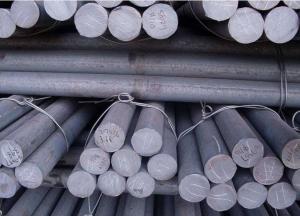Hot Rolled Steel Spring Flat Bar
- Loading Port:
- China Main Port
- Payment Terms:
- TT or LC
- Min Order Qty:
- -
- Supply Capability:
- -
OKorder Service Pledge
OKorder Financial Service
You Might Also Like
Product Description:
OKorder is offering high quality Steel Flat Bar at great prices with worldwide shipping. Our supplier is a world-class manufacturer of steel, with our products utilized the world over. OKorder annually supplies products to European, North American and Asian markets. We provide quotations within 24 hours of receiving an inquiry and guarantee competitive prices.
Product Applications:
Steel Flat Bar are ideal for structural applications and are widely used in the construction of buildings and bridges, and the manufacturing, petrochemical, and transportation industries.
Product Advantages:
OKorder's Steel Flat Bar are durable, strong, and resist corrosion.
Main Product Features:
· Premium quality
· Prompt delivery & seaworthy packing (30 days after receiving deposit)
· Corrosion resistance
· Can be recycled and reused
· Mill test certification
· Professional Service
· Competitive pricing
Product Specifications:
Commodity: Mild Steel Flat Bar
Standard: GB;JIS
Material: Q195-235;SS400
Origin place: China
Thickness: 3mm-30mm
Width:20mm-200mm
Length: Max 12m
Certification: SGS/BV
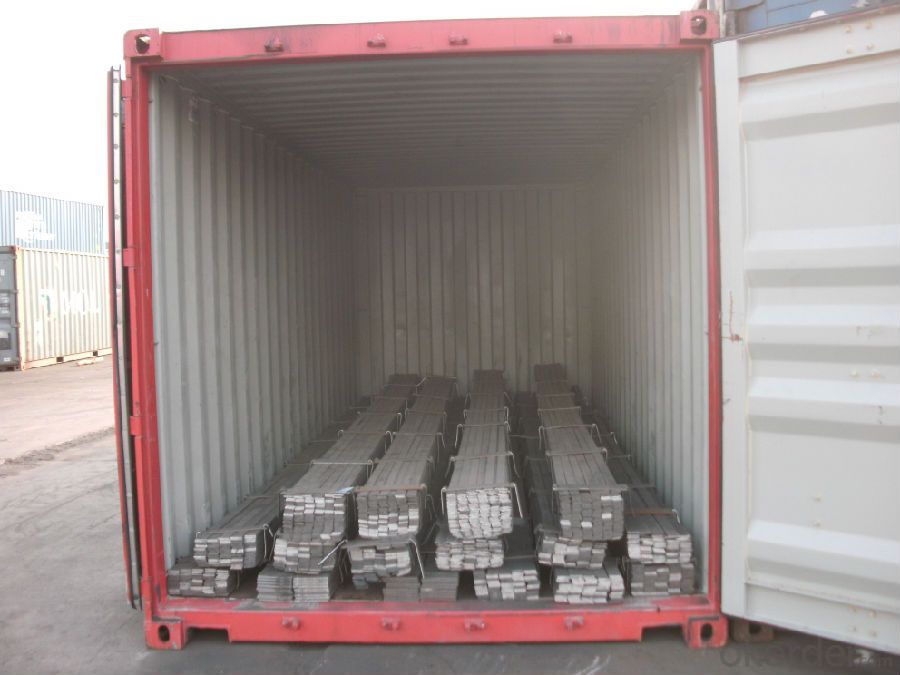
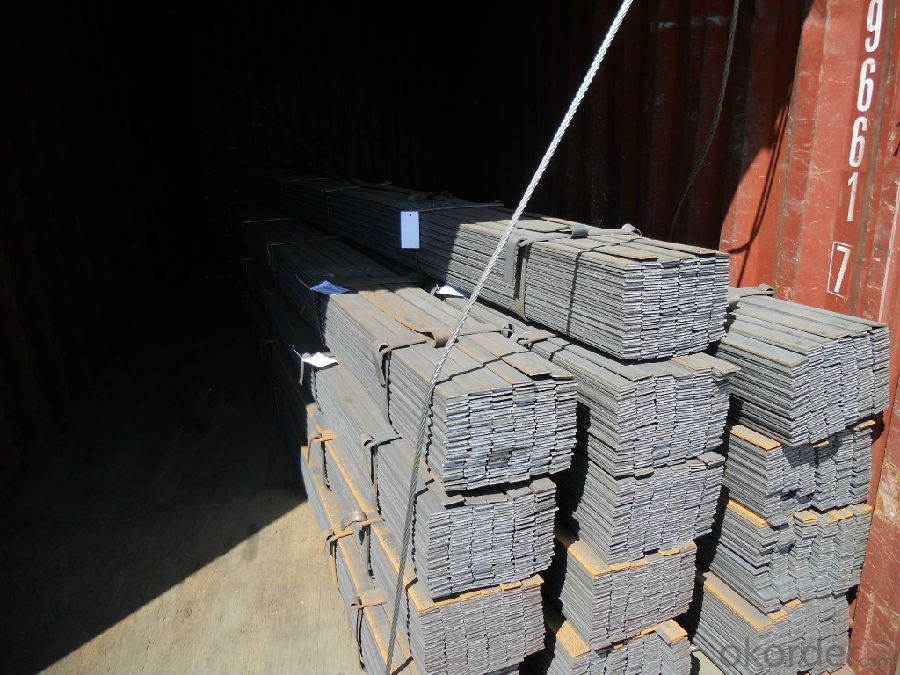
Packaging & Delivery of Mild Steel Flat Bar
Packaging Details: The Mild Steel Flat Bars are packed in bundles and loaded in 20 feet/40 feet container, or shipped by bulk cargo ,also we can do as customer's requirements.
Delivery Details:30~45 days upon the receipt of buyer payment by T.T. or L/C.
Production Flow of Steel Flat Bar
The Mild steel flat bar is made through three processes:
1.Feeding the material: Feeding the row material (the steel plate) to Slitting Line.
2.Slitting:The steel plate would be slitted into expected width by lengthways cutter.
3. Leveled and cutting: The plat bar would be ground into level by the grinder and then cut into required length
FAQ:
Q1: Why buy Materials & Equipment from OKorder.com?
A1: All products offered byOKorder.com are carefully selected from China's most reliable manufacturing enterprises. Through its ISO certifications, OKorder.com adheres to the highest standards and a commitment to supply chain safety and customer satisfaction.
Q2: How do we guarantee the quality of our products?
A2: We have established an advanced quality management system which conducts strict quality tests at every step, from raw materials to the final product. At the same time, we provide extensive follow-up service assurances as required.
Q3: How soon can we receive the product after purchase?
A3: Within three days of placing an order, we will begin production. The specific shipping date is dependent upon international and government factors, but is typically 7 to 10 workdays.
- Q: Can special steel be used for making automotive engine components?
- Automotive engine components can indeed be crafted using special steel. Due to its remarkable strength, durability, and resistance to wear and corrosion, special steel is frequently employed in the manufacturing process. Engine components like crankshafts, connecting rods, camshafts, and valves necessitate materials capable of enduring high temperatures, pressures, and mechanical stresses. Special steel, encompassing high-strength alloy steel or stainless steel, fulfills these requirements and grants the essential performance characteristics for automotive engines. Furthermore, special steel presents the added advantage of reducing weight, thus contributing to improved fuel efficiency and engine performance. All in all, special steel emerges as a fitting material choice for automotive engine components, thanks to its exceptional mechanical properties and capacity to withstand the demanding conditions under which engines operate.
- Q: What are the different types of wear-resistant steel?
- There are several different types of wear-resistant steel, including AR400, AR500, HARDOX, and DOMEX. These types of steel are specifically designed to withstand abrasive wear and impact, making them ideal for applications such as mining equipment, excavator buckets, and conveyor systems. They have high hardness and toughness properties, which help to prolong the lifespan of the equipment and reduce maintenance costs.
- Q: Is special steel suitable for manufacturing cutting tools?
- Yes, special steel is highly suitable for manufacturing cutting tools. Special steel refers to steel that has been specifically designed and processed to possess exceptional properties such as high hardness, toughness, and wear resistance. These characteristics make special steel an ideal choice for cutting tools as they enable the tools to withstand the high stresses and pressures involved in cutting operations. The hardness of special steel ensures that cutting tools can maintain their sharpness for a longer period of time, leading to improved cutting performance and efficiency. Additionally, the toughness of special steel allows cutting tools to resist chipping, cracking, or breaking during use, enhancing their durability and longevity. Furthermore, the wear resistance of special steel ensures that cutting tools can withstand the abrasive forces encountered during cutting operations without significant loss of material or deterioration. This helps to maintain the accuracy and precision of the cutting tools over time. Moreover, special steel can be tailored to meet specific requirements for different cutting applications. For example, high-speed steel (HSS) is a type of special steel that is particularly suitable for cutting tools used in high-speed machining operations. HSS possesses excellent heat resistance and can retain its hardness even at elevated temperatures. In conclusion, special steel is highly suitable for manufacturing cutting tools due to its hardness, toughness, wear resistance, and ability to be customized for specific cutting applications. These properties enable cutting tools to deliver optimal cutting performance, durability, and accuracy.
- Q: What are the common surface treatments applied to special steel?
- Some common surface treatments applied to special steel include galvanizing, powder coating, electroplating, and heat treatments such as case hardening. These treatments help improve the corrosion resistance, hardness, and appearance of the steel, making it suitable for various applications in industries like construction, automotive, and aerospace.
- Q: How is mold steel used in injection molding?
- Mold steel is used in injection molding to create the molds or tooling that are used to produce plastic parts. The steel is used to form the cavity or core of the mold, which determines the shape of the final product. Mold steel is chosen for its high strength, durability, and heat resistance to withstand the high pressures and temperatures involved in the injection molding process.
- Q: What are the different methods of surface electropolishing for special steel?
- There are several different methods of surface electropolishing for special steel, each with its own unique advantages and applications. 1. Immersion Electropolishing: This method involves immersing the special steel components in an electrolyte bath and passing a direct current through the solution. The current causes the surface of the steel to dissolve, resulting in a smooth and polished finish. Immersion electropolishing is commonly used for large and complex parts, as it can provide uniform surface improvement on all exposed areas. 2. Electrolytic Electropolishing: This technique involves applying a direct current directly to the surface of the special steel component using an electrode. The current causes the surface to dissolve, resulting in a smooth and reflective finish. Electrolytic electropolishing is often preferred for smaller or intricate parts, as it allows for precise control over the process and can target specific areas that require improvement. 3. Reverse Pulse Electropolishing: This method utilizes a combination of direct and reverse current pulses to achieve a superior surface finish. The reverse current pulses help to reduce the surface roughness and eliminate any embedded particles or contaminants. Reverse pulse electropolishing is particularly useful for special steel components that require enhanced corrosion resistance and improved cleanliness. 4. Magnetic Field-Assisted Electropolishing: This technique involves applying a magnetic field to the electropolishing process, which can improve the polishing rate and surface finish. The magnetic field aligns the electrical current and enhances the removal of material, resulting in a smoother and more uniform surface. Magnetic field-assisted electropolishing is often used for special steels that are difficult to polish or have complex geometries. 5. Flow-Assisted Electropolishing: This method involves using a flowing electrolyte solution to enhance the electropolishing process. The flowing solution helps to remove dissolved material from the surface and prevents the formation of gas bubbles, resulting in a smoother and more efficient polishing. Flow-assisted electropolishing is commonly used for large or flat special steel components that require a high-quality surface finish. Overall, the selection of the appropriate method of surface electropolishing for special steel depends on the specific requirements of the components, such as size, geometry, and desired surface finish. Each method offers its own benefits and considerations, and consulting with an experienced electropolishing specialist is recommended to determine the most suitable approach.
- Q: How does molybdenum improve the performance of special steel?
- Molybdenum plays a crucial role in enhancing the performance of special steel due to its unique properties and characteristics. First and foremost, molybdenum significantly improves the strength and toughness of steel, making it more durable and resistant to deformation. This is achieved by forming a solid solution with iron, which results in a fine-grained microstructure and reduces the formation of brittle phases in the steel. Moreover, molybdenum increases the hardenability of steel, allowing it to be heat-treated to obtain desired mechanical properties. This is particularly important in the production of special steel, where high strength, wear resistance, and thermal stability are often required. By enabling effective heat treatment, molybdenum ensures that the steel can be processed to meet specific performance requirements, such as hardness, toughness, and dimensional stability. Additionally, molybdenum enhances the corrosion resistance of special steel, making it suitable for various challenging environments. It forms a protective oxide layer on the surface of the steel, which acts as a barrier against corrosive substances like acids, alkalis, and salts. This resistance to corrosion is crucial in applications where the steel is exposed to harsh conditions, such as marine environments, chemical processing plants, and oil and gas industries. Furthermore, molybdenum improves the high-temperature strength and creep resistance of special steel. It enables the steel to maintain its mechanical properties even at elevated temperatures, making it suitable for applications where the steel is subject to prolonged exposure to heat or mechanical stress. In summary, molybdenum plays a vital role in enhancing the performance of special steel by improving its strength, toughness, hardenability, corrosion resistance, and high-temperature properties. These attributes make molybdenum an essential alloying element in the production of special steel for various industries, including automotive, aerospace, energy, and tool manufacturing.
- Q: How does special steel perform in terms of machinability?
- Special steel generally has good machinability due to its composition and properties. It is often designed or treated to have improved cutting and machining characteristics, such as increased hardness, toughness, and wear resistance. This allows for efficient and accurate machining operations, resulting in high productivity, better surface finish, and reduced tool wear. However, the machinability of special steel can vary depending on the specific grade, heat treatment, and machining conditions used.
- Q: How does special steel contribute to the manufacturing of consumer goods?
- Special steel plays a crucial role in the manufacturing of consumer goods by offering superior strength, durability, and corrosion resistance. It enables the production of high-quality products such as automobiles, appliances, cutlery, and tools, ensuring their longevity and performance. The use of special steel enhances the overall quality and reliability of consumer goods, leading to increased customer satisfaction and product longevity.
- Q: What is special steel? What is special steel?
- However, special steel refers to stainless steel, other special steel plate, such as automobile steel plate and military steel plate, etc., stainless steel is divided into austenite and ferrite, such as 304316410439 stainless steel varieties. According to the specific use of stainless steel quality, such as 409L can be used as a container, microwave oven and elevator industry, 304 can be used as medical devices. The market prospect is not an ordinary person can predict, domestic steel prices are monthly pricing, big companies such as Baosteel, TISCO, Zhangjiagang Pohang. Lead the trend of special steel prices.
Send your message to us
Hot Rolled Steel Spring Flat Bar
- Loading Port:
- China Main Port
- Payment Terms:
- TT or LC
- Min Order Qty:
- -
- Supply Capability:
- -
OKorder Service Pledge
OKorder Financial Service
Similar products
Hot products
Hot Searches
Related keywords
